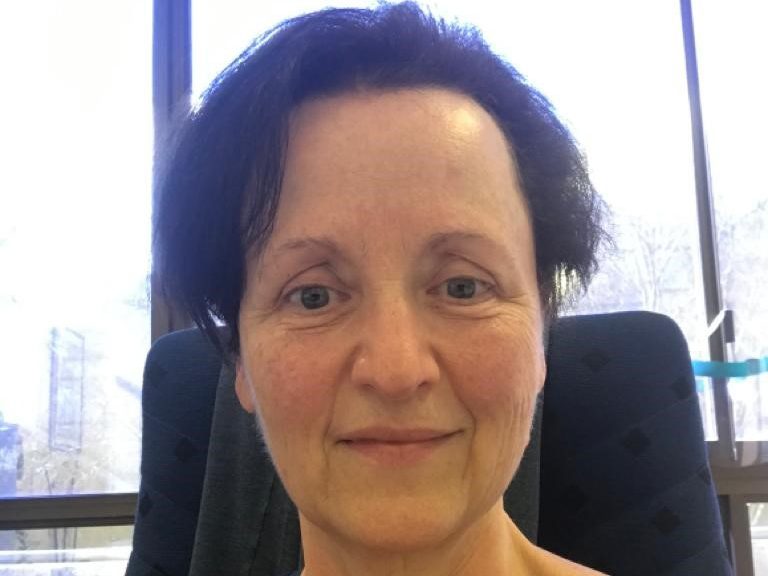
OpEds

Second wave like a tsunami
We have emerged from the eye of the storm to confront a second wave that is significantly worse than we anticipated. It feels like a tsunami.
Once again, SARS CoV2 has proven to be unpredictable, and has mutated to a new strain which is more contagious, involves a higher number of people, and is less discriminating. We have easily slid back into our roles in a well-remembered dance.
Once again, we are working long hours and spending a lot of time on our feet. Stress levels are very high again, and there is a constant feeling of anxiety as one waits for the next crisis.
Last time, the patients were older, and it was easier to be more philosophical in accepting their deaths. In a complete deviation from pattern, this wave of COVID-19 has affected younger people to a much greater extent. They are often younger than us, and we all know a lot of people who have COVID-19.
As with the first wave, there are more men in hospital than women, with 60% of the patients being male and 40% female. This time, however, all population groups seem to be represented.
When looking at intensive-care units (ICUs), which are a critical resource under huge pressure, it’s startlingly obvious that not only have we had to accommodate more patients in ICU, but that they are significantly younger and much sicker this time. Fifty percent of the ICU cohort are under the age of 60, and 80% are on more than usual oxygen therapy.
Our ICU is full, and we are using all our ventilators for one form of ventilatory support or another. It is a surreal experience to look around and see the vast majority of our patients with masks of various shapes and sizes strapped tightly to their faces in an attempt to keep their blood oxygen levels adequate. It’s difficult to communicate, and all one sees are the eyes looking at you with fear, anxiety, distress, and sometimes calm acceptance.
The mood is sombre, and there’s little humour this time around. Patients with comorbidities still raise a red flag in that they are more likely to have severe COVID-19 with a higher mortality rate, but this time around, there are significant numbers of young, fit, healthy individuals with no comorbidities who are desperately ill. The staff are more fearful because of this. After all, you can’t allay your anxiety by listing the patient’s comorbidities which have resulted in severe COVID-19 if there are none.
Another unique feature is the number of young individuals presenting with severe cardiac disease that has proven to be rapidly fatal. There are also a few confirmed cases of reinfection now, some far more severe than the initial episode of COVID-19.
In addition, we are called for far more acute deteriorations in clinical condition, and seem to be running to many more resuscitations than we ever dreamt we would be. Often, patients have young families, and a desperate desire to live for their children.
There is definitely a higher number of patients who require mechanical ventilation and as such, there is enormous pressure on ICU beds. We are contacted on a daily basis by hospitals looking for ICU beds for young patients with severe COVID-19 pneumonia.
It’s not only the beds that are under pressure, but the units are often understaffed as the healthcare workers contract COVID-19 themselves or simply burn out.
This past weekend, I was told of a physician who contracted COVID-19 and landed up on a ventilator in his own unit and was cared for by his friend and colleague. This is all very hard to deal with.
The fact that many of the patients in hospital are well into the pulmonary phase with significant inflammatory changes in their lungs means that it’s a juggling act, with ICU beds being filled as soon as they are emptied and patients yo-yoing between ICU and the wards, and back to ICU.
There are times when ambulances wait patiently to offload their patients while space is made in emergency, or they are diverted to another hospital.
We are aware of private hospitals which have actually run out of oxygen for a time period. We are aware of hospitals in which they have started using anaesthetic machines to ventilate patients in their theatres.
We have seen photos from a hospital in Gauteng which has set up tents in its parking lot to treat patients with COVID-19.
Resources are limited, and a strict criteria for ICU admission will have to be implemented, a task we are dreading.
In the meantime, as we deal with this unprecedented surge in numbers, elective surgery has been cancelled and, other than COVID-19 cases, we are admitting emergencies only. People are scared to come to hospital and as such, are waiting until they can’t wait anymore, being admitted in extreme conditions.
Our physical discomfort is worse with long hours in personal protective equipment in the summer heat with no air conditioning in the wards. Our fingers are cracking open again, and the emotional toll is huge.
This past weekend, we witnessed the compassion with which our staff cared for a patient with Down’s Syndrome and how happy they were when it seemed that she would survive. We have taken wives to say goodbye to their husbands who are dying of COVID-19. We had to tell five patients that their parent/spouse had died of COVID-19 while they were lying in a hospital bed. I also had to call a lady who was isolating at home with COVID-19 to inform her that her husband had passed away on their 56th wedding anniversary. We also celebrated two birthdays here.
We are familiar with the vagaries of this disease, and write the treatment charts by rote, monitoring individuals intensively. We make therapeutic adjustments according to various clinical and blood parameters, desperate to prevent severe pneumonia or the cytokine storm.
We feel enormous relief if it looks as if the inflammatory process is reversing. And yet, in spite of all the knowledge gained over the past few months, there are patients who you know cannot pull through. At those times, kindness and compassion are all we can offer.
The stories are familiar. A minority of our patients (often the elderly) contracted COVID-19 through no fault of their own. But the vast majority know exactly where they picked it up – a dinner party, a function, on holiday, at a picnic, in a friend’s home, etc. The equation is simple to me: socialising without respecting the COVID-19 rules of social engagement = COVID-19 (for yourself or some unlucky individual that you come into contact with).
If you’re lucky, you get away lightly, and if you’re unlucky, you become critically ill (with the attendant risk of dying) or you develop long COVID-19 or one of the unusual late complications.
It’s going to get a lot worse, and we are going to run out of hospital beds, medication, and potentially oxygen. There’s no magic cure, and the vaccine is on the horizon. It behoves everyone to be respectful of COVID-19 and behave responsibly, respecting the sanctity of life.
- Dr Carron Zinman is a pulmonologist at the Linksfield Clinic.










